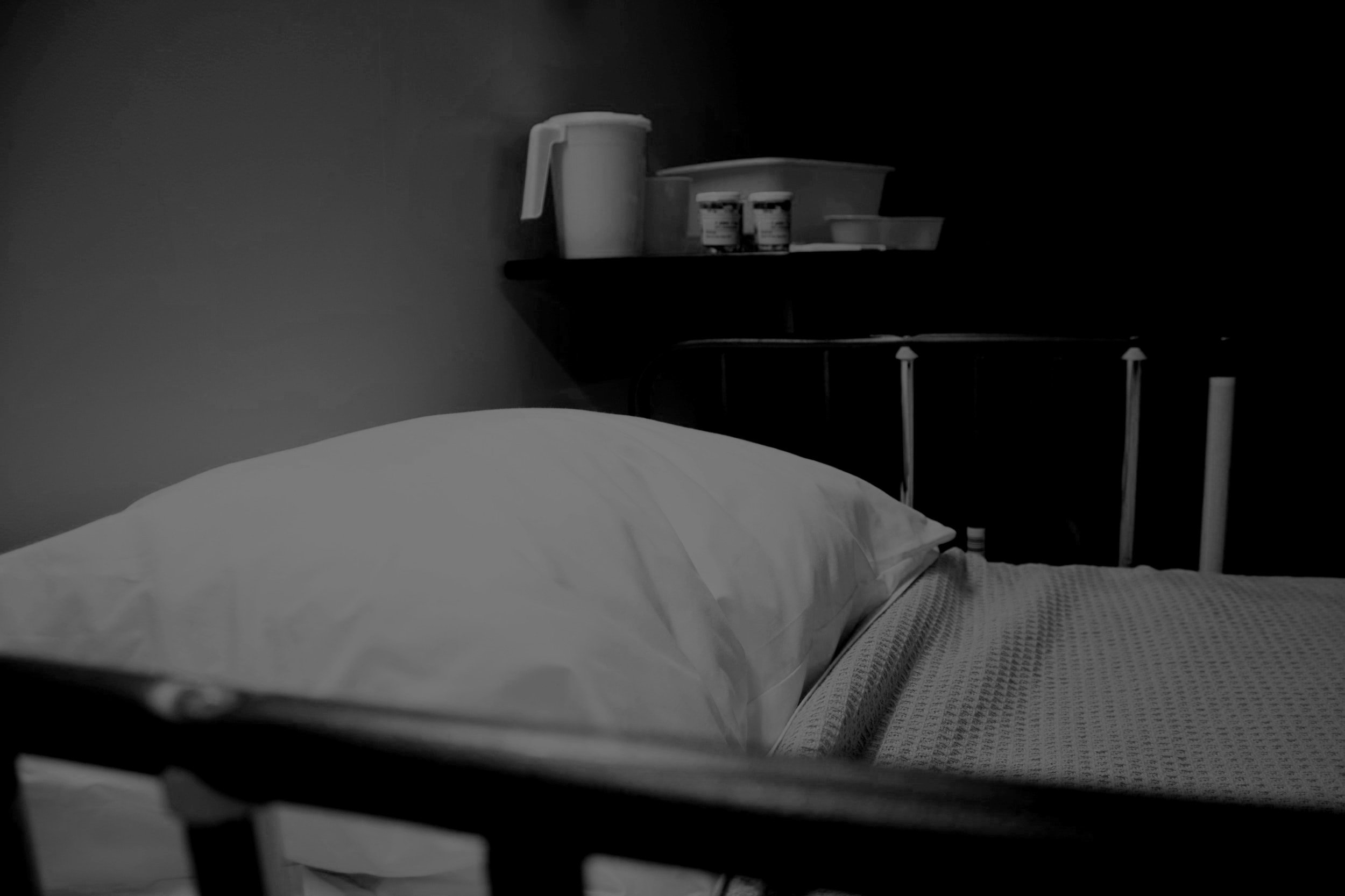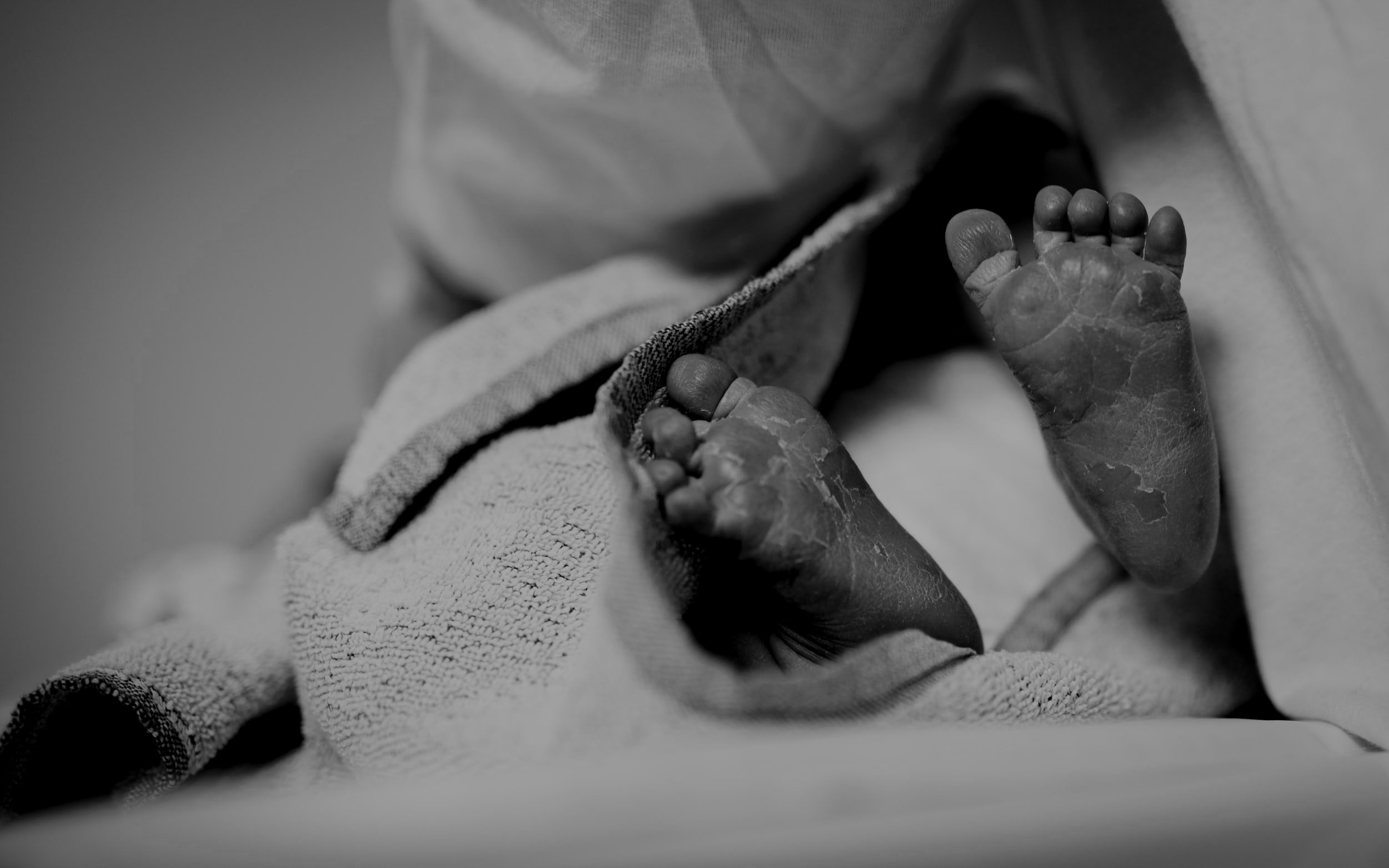
Managing At Home Delivery
We strongly advise you to discuss your options with your doctor.
We are sorry you have landed here.
We know your heart is breaking having to research how to deliver your precious child into the world, only to plan to bury him/her. We wanted to help you know your options as well as what to expect during your delivery at home.
Expectant Management
Upon learning about your baby's death, you may sometimes hear words you do not understand. Words like expectation management or natural miscarriage. We want to help you understand. This is when you allow your body to naturally passed your baby. Your doctor may ask you if you want to “watch and wait”, for a natural miscarriage. Sometimes it will take days or weeks from the time you learn about your baby’s death to pass her/his body. Most women will deliver within two weeks.
Once an active miscarriage starts, it may start slowly with one drop of blood and progress over a few days or possibly over within a few hours. The length of time does not match the length of the pregnancy. This is a reasonable option for most women during the first trimester. While waiting, your doctor or midwife may want to follow you into the office to check your vitals or request labs. Call your doctor or midwife immediately if you are feeling ill, extremely weak, lethargic, or throwing up. (Read below when to seek medical attention)
If several weeks have passed, and you still have not delivered, you will need to call your doctor or midwife and revisit your options. As time passes, your risks of infection and blood clots will increase.

Preparation
It is always good to prepare for your upcoming miscarriage. This will also give you something to do while you wait
Gather these items or order a miscarriage kit.
-
Miscarriage Kits
You can order miscarriage kits from Heaven’s Gain, Held in Hope, and Covenant Resources.
-
Large Sanitary Pads
The overnight ones are usually the best ones to have handy, as well as lighter ones as the bleeding slows.
-
Container For Baby
We recommend a container prepared with saline or water.
-
Towels
We recommend gather a few, but at least one you can part with in case it needs to be thrown away.
-
Scissors
Just in case you need them. It’s better to have them handy.
-
Hydration
A bottle of water or anything with electrolytes nearby. Stay away from anything with lots of sugar as it may make you nauseous.
-
Strainer & Bowl
Place the bowl in the toilet with the strainer inside before you sit. This will allow you to collect your baby’s body once your miscarriage is complete as well as collecting blood to monitor your blood loss.
-
Chux
There will be a lot of blood as well as sizeable blood clots, and the chux has a waterproof backing which makes disposing of them easier.
-
Over the Counter Pain Meds
To help you remain comfortable, it is helpful to take acetaminophen at the onset of the cramping.
Consider: Many women have natural miscarriages at home, some even alone. If you are within a few weeks along, we highly recommend having someone with you in the same room once the miscarriage becomes active. You will need someone to be with you as moral support and if an emergency occurs, to dial 911. If having someone with you is not an option, always have your phone with you.
Signs of Upcoming Miscarriage
Abdominal pain: may feel like mild cramping or harder painful cramps, sometimes approximating labor pains. They may progressively get worst as your body tries to pass your baby.
Blood: may start off with spotting – brownish and then turn bright red.
Upset Stomach: some women will have an upset stomach or feelings of nausea.
You may be surprised at the onset of the miscarriage. If this happens, it should be a quick process for your body. If you notice signs of spotting, or have an icky feeling it’s coming, go ahead and gather your supplies. Call for someone to be with you during this time. When the bleeding begins, it may be sudden, dramatic, and surprise you. It is best to have someone with you to process the physical and emotional needs you will have.
Managing the actual miscarriage.
The next section may contain words that are hard for you to process. Each miscarriage will be different, but below will help you prepare best. Read through each option to find out which is best for you. Contact your doctor to get expert advice if you are still confused and need clarification.
If you have been anticipating your miscarriage for a while, in case of a missed miscarriage, then you may find a bit of relief that the process is starting and hopefully will be over soon. You may also find yourself overwhelmed with anxiety, grief and begin to panic. Keep in mind that women have been miscarrying at home for over two millennia. Having a person to support you through the process can be very helpful to process with, distract you when you need it, and pray with you through the entire process. It may be helpful to set up a prayer space where you will be to try and focus through the pain. Grab a crucifix where you can see it, your rosary in your hand, take a deep breath, and say a prayer.
Delivery Positions
-

Bed or Floor
Finding a position that you feel comfortable is sometime hard when the pain increases. If you decided to miscarry in your bed or on the floor, make sure you put on your chux underpants. Have a few near you at the onset of bleeding. There is no recommended position. You may sit, crouch, kneel, get into a ball or the fetal position, whatever position feels comfortable try to find it. You may find that as your miscarriage progresses, you will change your position or even place. Allow your body to tell you what to do.
It is best to have something to lean your back against if you need support. You may find it helpful for your spouse or a friend to be behind you.
Caution: You may experience nausea,feel faint, break out in cold sweats, and at some point need more support. Share with your person what you are feeling and they may be able to support your through those feeling.
-

In your tub
Important: Do not get into the tub without another person close by due to a danger of passing out during the miscarriage.
Most women who miscarry find the warmth of a bath the perfect place to ease the pain associated once the cramps begin. The water also helps to support your weight through different positions. The water may help to soothe you physical needs, but also your emotional ones as well.
The water helps to hide things you may not be ready to see immediately once the blood mixes with water. Your tub also provides you with a backrest and supports your arms if needed. You can change positions inside the tub if needed.
The tub also allows easy clean up after delivery instead of transferring. Make sure you keep a few chux nearby so you can keep everything tidy when you get out. Make sure all of your supplies are nearby, especially your container to collect your baby’s body if desired for burial.
Note: do not open your drain during delivery at any point no matter how much you expel until you have collected the baby’s remains.
-

On the Toilet
The toilet is often a comfortable position for women during a miscarriage. Make sure you have placed a bowl in the toilet to collect blood in addition to a strainer to gather tissue and your baby’s body. Having to retrieve the baby from the toilet can be emotionally painful.
Do not flush blood or tissue until you are sure your doctor does not need to monitor the volume of blood/tissue lost.
If you begin to feel faint while on the toilet, quickly move to the bathroom floor. It’s better to have to clean up your bathroom, then to fall. Make sure all supplies are near you and your chux are under your feet.
-
Many women report that you will feel a rush of blood before you pass the amniotic sac containing your baby. You may pass several clots first as well. After delivering your baby, feel free to “STOP” and hold him or her. If the baby is inside the sac, carefully open it up.
Wet your hands before you hold your baby because of how fragile his/her little body is. Talk to your baby, pray with your baby, if you feel comfortable with that. Do not feel the need to be in a hurry during this time. When you are ready, place him or her in the container you prepared so you can finish passing the placenta. If you notice a cord still attached to the sac, do not attempt to pull it. Allow your body to pass the placenta before cutting the cord. There is a risk of hemorrhaging if blood vessels are cut prematurely. It is best to contact your doctor.
-
During this time expect to pass more clots and a lot of blood. Don’t panic. Keep breathing and ask Mary to be with you. Y
If at all possble, try and collect the blood in a bowl or “hat” for your toilet seat so blood loss can be measured if needed. You may be shocked to see the amount of blood you pass. The blood you are passing is mostly endometrial lining which sloughs off during your period, except your body was preparing to carry your baby, so there is more lining that needs to do. The blood does not directly come out of your blood vessels.
As the placenta detaches you will have some “active” heavy bleeding as well. The clots that are passing are not tissue, just clots as the blood sits inside of you. It is possible for you to pass clots the size of the palm of your hand. You will continue to see blood steady tickle with occasional gushes, as clots are moving out of the way.
If your doctor or midwife asks about blood loss, you can pour the blood into a measuring cup. You can also share how many chux or pads you used. This is one disadvantage of water delivery.
-
The baby’s placenta may come out quickly or not. It is best if it comes out within an hour or so. The uterus will not stop bleeding until is is able to pass the placenta and tightly clamp down. Your uterus is a big muscle, and it will try to clamp down to stop the bleeding but will only be able when the placenta is delivered.
If the placenta is taking a while to deliver, there are ways to help it come out. Do not pull on the cord, it can cause damage to your uterus. Feel for your fundus, the top of your uterus by placing your hands on your stomach and feeling around. Once you find it, massage it very firmly, don’t hurt yourself, but rub slowly and deeply until you begin to feel strong cramps beginning.
Continue to massage for another minute ensuring the cramping continues and contracts your uterus to expel the placenta. Allow yourself to be guided by the way you are feeling, if it still has not passed try bearing down. If the cramping stops, massage your fundus some more.
Your placenta should be delivered in under ten minutes with this method. But if more than an hour has gone by, and you are still bleeding copiously, and there are no signs of your placenta, you should call for medical assistance. This could be a sign of a deeply embedded placenta into the uterine wall and may be difficult to expel.
-
You should recognize your placenta immediately. The side that attaches to the uterus will look like raw hamburger meat, and the baby’s side will be shiny and more purplish. You may see blood vessels leading towards the umbilical cord in the center. Place the placenta on a chux and have a good look at it. It should be round or oval in shape and varied sized lengths according to your pregnancy gestation.
Note: If there are any missing pieces from the edge of the placenta, there may still be a piece inside of your uterus. If you are unsure, place inside a container to take to your doctor. If the placenta is in pieces, or missing pieces, seek medical attention. You may require a D & C to remove the remaining parts.
It is possible the placenta does come out completely but in pieces. Blood clots can be broken up easily where the placenta will feel more fibrous and intack.
-
Once the placenta is delivered you most likely will pass more blood and clots. There may be a gush of blood behind the placenta. It should decrease after the placenta is delivered. The cramping and pain should decrease significantly at this point and become more tolerable. If you are bleeding significantly, take acetaminophen rather than ibuprofen until the bleeding subsides.
-
Depending on the length of time since your baby has died, you may see a difference in what your baby’s sac looks likes versus some you may have seen online. The fluid decreases over time and depending on how much you had to begin, you may not see a bubble of fluid as expected.
It is normal for the uterus to form a clot around the sac/baby as time goes on. Depending on how your body responds, you may deliver a sac very obvious, or attached to a clot. You may very well confuse the sac attached to a clot as just a large clot. It may look like the placenta as well, but is a sac inside a clot. You can search through the clots to find the sac.
This may sound harsh, but it will feel different when you are looking for your baby. The clot will in fact be on the sac, and not the baby itself. If you choose to remove the baby from the sac, you may do so and place the baby inside the container, or place both inside.

What to expect after you deliver
When you are ready, it is time to clean up.
When you have had your time with your baby, it’s time to clean up. Clean up using cool, not cold water. Warm to hot water will make the blood harder to remove. If you delivered out of water and want to bathe, you may draw a warm bath to soak. Try to avoid using anything with strong scents as it may nauseate you and can cause infections.
If you have not been hydrating all day, drink a full glass of cool water to refresh you, or anything with electrolytes. During delivery, you will have lost fluid volume and will need to replace it. Do not try to clean the entire bathroom, just yourself, and anything that may stain. Excessive cleaning may cause you to faint.
After you finish cleaning up and dressing, we recommend you take photographs of the baby. If this is too hard, as your spouse or your person to do it. Even if you do not want to see the picture now, you may want to see your baby later. It is always sweet to put your wedding ring next to the baby. You may never share these photos, but you may treasure them later. After taking photographs, you will need to place the container containing your baby in the refrigerator. This slows down decomposition.
Recovery
After you miscarry your baby, call your doctor. Your doctor will likely want to see you for a follow-up ultrasound to ensure the uterus is empty and an exam.
You can expect to bleed for several weeks. You may stop and start as your body heals. Eventually, the bleeding will change from red to brown to tan and present itself as discharge.
If the bleeding persists for more than two weeks, check back in with your doctor. It is possible for something to have retained in the uterus and not detected by the ultrasound or exam. We recommend using pads and not tampons to prevent infection. Do not stick anything in the vagina until you have completely stopped bleeding. Be sure to check with your doctor about when it is safe to resume marital relations.
Rest and hydration are very important. Do not exercise or lift anything heavy during the first several days. Take a few days off from work, and ask for help with the kids. Even if you have a job that isn’t too strenuous, you may not feel up to facing anyone. Expect to feel the need to isolate yourself and time to yourself as you process what just happened.
It is common to feel waves of depression. Grief is to be expected, as well as the hormonal drop after miscarriage. You may hear some call it “the baby blues” or “postpartum depression.” Most women are unaware that after a miscarriage, they have a higher chance of postpartum depression, higher than a mother that delivers a live baby. Women who deliver a live baby are often distracted by friends and family congratulating them with balloons and flowers. After a miscarriage, you may be alone, and the added grief of pregnancy loss. If you are having waves of depression, reach out for help. Pills do not make the grief go away, but they could help you manage while you heal.

When to get medical advice?
If you are unsure what you are experiencing is norma, get medical advice from an expert or go to the nearest emergency room.
If you are ever unsure if what you are experiencing is considered “normal,” don't hesitate to get in touch with your doctor or midwife.
A fever over 100 degrees F.
Severe abdominal pain that increases to a point where you cannot withstand the pain.
Extensive nausea and vomiting
Difficulty urinating
Foul-smelling vaginal discharge.
Excessive bleeding that saturates a pad after an hour for more than a few hours straight after delivery.
If you think you did not expel everything from the uterus or the placenta was not delivered completely.

Caring for your baby’s body
We strongly recommend not bringing your baby’s body to the hospital or doctor’s office. If you decide to take the baby with you, call the staff ahead and give strict orders that no one is to touch the baby’s body. In the event you are taken to an emergency room, keep the baby in your custody. If the doctor or hospital staff takes custody of your baby, even for a moment, they may refuse to give him or her back. It may be helpful to bring photographs instead of your baby’s body. Some hospitals have policies and insist on testing. There is no reason to allow them unless you yourself wish to have testing performed.
In the event you deliver in a hospital, ask your doctor what your rights are to receive the remains of your baby after delivery. Hospitals’ disposal of babies’ bodies varies and depends on state law. Disposal options may include cremation with medical waste before transport to a landfill, cremation with other babies with eventual burial (non-public location, flushing into the sewer system. Babies under twenty weeks may be classified as medical or biohazard waste and discarded as such. This varies by state and by the hospital. It is a hard truth, but better to know what you are facing, so you can advocate for your baby’s body to be returned to you.


